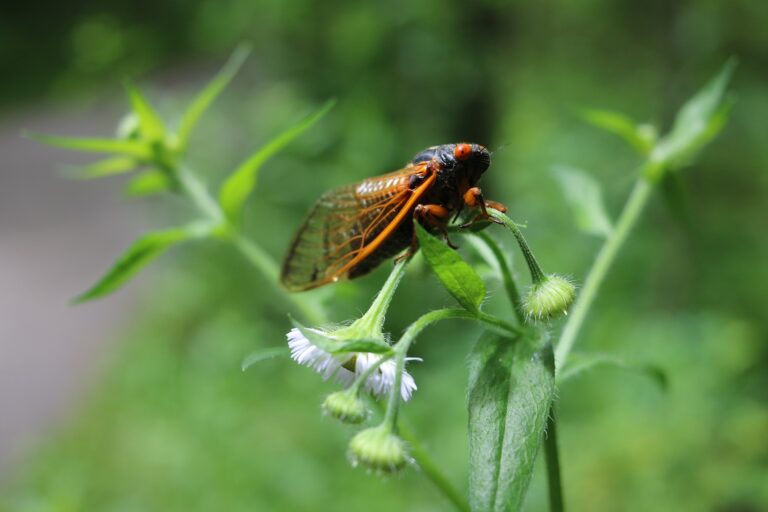The spotted lanternfly (Lycorma delicatula) was found in Illinois in September 2023. Now, people there should act fast when they see these harmful. This planthopper species is harmful and is now reported in 17 states, including Illinois.
The Spread and Impact
Affected States
- Connecticut
- Delaware
- Indiana
- Kentucky
- Maryland
- Massachusetts
- Michigan
- New Jersey
- New York
- North Carolina
- Ohio
- Pennsylvania
- Rhode Island
- Tennessee
- Virginia
- West Virginia
- Illinois, especially in Cook County)
Distinctive Appearance
All adults have easy to spot unique features such as polka dotted forewings and bright red underwings. Despite their butterfly like look, they are very damaging. They feed on approximately 100 types of plants and trees, those that have an economic importance like grapevines, apple orchards, hops etc among others.
Why They’re Dangerous
Their danger lies with the honeydew they secrete while feeding which lets sooty mold grow. The grown mold blocks photosynthesis in leaves which can stress the plant or even causing death of it. A female adult can lay multiple egg masses where each contain around 30-60 eggs, thereby leading to growth of their population very quickly.
What To Look For
The nymphs appear black with white spots at present. As they grow, they become red and about an inch long as well as a half inch wide. In their adult stage, the vibrant red color appears only when they fly. During rest, their grey forewings with black spots cover the striking hindwings.
Here’s what you should do if on seeing a lanternfly,
- Report Sightings, immediately report the sighting to Illinois Department of Agriculture at [email protected]. A fact sheet with pictures is provided by University of Illinois Extension.
- Kill Pests, squash all nymphs and adults, scrape egg masses into a container containing hand sanitizer or rubbing alcohol to kill them. Make sure you capture photos before these steps and report your findings.
- Inspect vehicles and outdoor things, always look for any eggs or insects found in your vehicles, boat, camper, even outdoor articles before leaving any area. You should destroy these immediately.
- Spread awareness, ask others also to look for them and spread some awareness about these pests. This type of public help is required to limit their expansion.
A Growing Threat
This invasive species reached America in Pennsylvania first back in 2014 probably through goods brought from overseas countries. It has spread vastly compared to other invasive pests i.e., reached 17 states within only ten years span where comparatively spongy moth needed almost 100 years to spread from Massachusetts and New York.
Concern Extends to the West Coast
Apart from that, it can jump surprising distances via powerful legs or fly short distances. It can move swiftly nearly about 34 miles and are actually known as skillful hitchhikers able to fly into open windows of vehicles or bins while loading, then lay eggs on hard surfaces only.
On recent instance, “A truck carrying about 30 egg masses of lanternfly found hidden in art installation from New York was sent back by the border protection authorities of California. The truck intended towards Sonoma County, California which is most significant wine producing spot in that state.
All states in USA are writing action plans now considering that these pests will automatically establish themselves given the time in their regions. For instance, Oregon where they focus on wine, apple, beer as well as hardwood industries have been on alert when two lanternflies were discovered during shipments from Pennsylvania. Washington has also created own action plan aiming to control these pests’ harming potential by 2033 even if there was no intervention whatsoever.
Quarantine processes and timely reports are required now to control this concerning situation.
Nebraska Forest Service were warned that these rampant pests could become the most dangerous one till date seen by many. Despite there is no confirmed report found by Nebraska till now, but they put emphasis on vigilance and responsible reporting for preventing any sudden infestation.
Here are few tips on how to identify them,
- Nymphs are colored black with white spots transitioning into red as they keep growing.
- Adults are approximately an inch long and half inch wide having yellow abdomens covered with black bars. Brown forewings featuring black spots at front end while speckled band is seen at rear end. Red hind wings with black spots at front and white plus black bars can be seen at rear end.
- Eggs just laid egg masses look like wet gray putty which turns dull brown over time. They can be spotted easily due to smooth surfaces like trees, bricks, stones, fences, grills, equipment including vehicles.
Other signs,
- Stickiness caused due to oozing sap attracts few other insects and it causes an unexpected mold growth.
- A strong rotten smell is spread due to honeydew fermentation
- Tree of Heaven identified by cantaloupe like bark and long leaves are their most favorite plants.
Habits
They gather in larger numbers while feeding where it is easier to spot early evening or late night when they travel up and down plant trunks. Throughout day, they cluster near the base or canopy of a plant.
Conclusion
The return of these harmful lanternflies threatens Illinois and several other states concerning damage to farming and forestry sectors. Quick action joined with public awareness become fundamental for controlling their rise. Report whenever sighted, kill pests, and inspect for clearing belongings play a crucial role in preventing their moves. Pooled effort becomes vital for controlling this invasive species impact.










+ There are no comments
Add yours